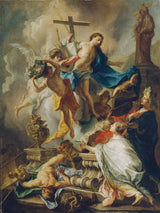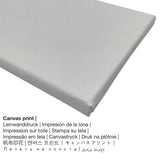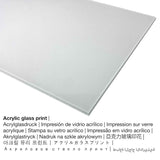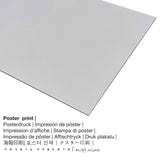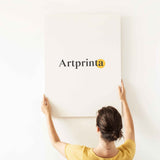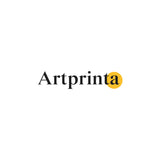Johann Ọkwọrọikọ Holzer, 1739 - Mmeri nke Iso Ụzọ Kraịst n'elu ikpere arụsị - ọmarịcha nka
Ụtụ gụnyere. Mbupu gbakọrọ na ndenye ọpụpụ.
Ozi nka ndị ọzọ sitere na webụsaịtị Belvedere (© - nke Belvedere - Belvedere)
In the center of the representation of Christ hanging over five allegorical figures. These represent the four then-known continents - "Europe" in white dress, "Asia" with a turban, "Africa" in the red robe with a spear and "America" with spring frost - and for paganism. The latter is shown at the bottom left by a backward fallen man with his left arm comprises an idol. Behind this can be seen on top of the weggekippte ark. Top right, however, the figure of Ecclesia is with a chalice, cross and the keys of St. Peter. Great importance in this painting the picture lighting to the pronounced chiaroscuro. The light coming from the left light illuminates Christ from the left and so does his wounded side clearly visible. Much more the character of a phenomenon is evoked by these light mood. On the dating of this important work of the precocious and died young Holzer prevails in the research remains disagreement. According to tradition, the painting was once signed and dated, with the annual number has been read differently than in 1730 and the 1739th Whether the great maturity that we encounter in this picture, it seems the later dating credible. [Georg Lechner, 5/2010]
Nkọwa nke akụkọ
In 1739 Johann Ọkwọrọikọ Holzer mere nka nka Victory of Christianity over paganism. The beyond 280 year old original creation was painted with the size of 91 x 69,5 cm - frame size: 111 x 89 x 7 cm. Oil on canvas was used by the artist as the medium of the work of art. The artpiece has the following text as inscrption: "formerly supposedly name: Ioan Holzer fecit 1739 [lt. Neustätter, 1933 and Dittmann] or 1730 [lt. Mick, 1984, and Kramer, 2010]". It belongs to the digital art collection of Belvedere located in Vienna, Austria. Site n'ikike nke: © Belvedere, Vienna, nọmba ngwa ahịa: 6155 (nwere ikike: ngalaba ọha). The creditline of the artwork is the following: purchase from Galerie Sanct Lucas, Vienna in 1976. Besides this, the alignment is in Eserese format and has an aspect ratio of 3 : 4, which means that the length is 25% shorter than the width. The painter Johann Evangelist Holzer was a European artist from Germany, whose artistic style was mainly Baroque. The Baroque painter lived for 31 years and was born in the year 1709 in Burgusio, Bolzano province, Trentino-Alto Adige, Italy and passed away in the year 1740 in Clemenswerth, Lower Saxony, Germany.
Nhọrọ ihe dị
Nchịkọta nhọrọ ngwaahịa na-enye gị ohere ịhọrọ ngwa na nha nke nhọrọ gị. Nhọrọ ndị a dị maka n'otu n'otu:
- Mbipụta kwaaji: The canvas print, not to be mistaken with a painting on a canvas, is a digital image printed on an industrial printer. A canvas has the sculptural impression of three dimensionality. The great advantage of canvas prints is that they are relatively low in weight, which means that it is easy and straightforward to hang up your Canvas print without the support of additional wall-mounts. Because of thata canvas print is suitable for any type of wall.
- Mbipụta akwụkwọ mmado (akwa akwa akwa): The Artprinta poster print is a printed flat canvas paper with a fine surface finish. The print poster is particularly suited for putting the art print in a personal frame. Please note, that depending on the size of the poster print we add a white margin of something between 2-6cm round about the artwork, which facilitates the framing with your custom frame.
- Aluminom ihe eji eme ihe: An Aluminium Dibond print is a print with an outstanding depth, which creates a fashionable look thanks to a non-reflective surface structure. The bright parts of the artpiece shimmer with a silky gloss but without glare. Colors are bright and vivid in the highest definition, details of the print appear clear and crisp, and the print has a a matte look that you can literally feel.
- Bipụta na enyo acrylic: An acrylic glass print, which is sometimes referred to as a an art print on plexiglass, will change the artwork into wall décor. Your own copy of the artwork is being made thanks to state-of-the-art UV direct print technology. The special effect of this are vivid, deep colors.
Nchịkọta dị mkpirikpi nke onye na-ese ihe
| Aha onye nka: | Johann Ọkwọrọikọ Holzer |
| Aha utu aha: | Holzer Elias, Holzer, Johann Evang. Holzer, Holtzer, Holzer Johann, holzer joh. evang., joh. evangelist holzer, Johann Evangelista Holzer, J. E. Holzer, Holzer Joh. Ev., Holzer Johann Evangelista, Joh. Evang. Holzer, Holzer Johann Evangelist, holzer j. e., Johann Evangelist Holzer, johann holzer |
| okike nke onye nka: | nwoke |
| Obodo onye nka: | German |
| Ọrụ: | onye na-ese ihe |
| Country: | Germany |
| nhazi ọkwa: | nna ukwu ochie |
| Ụdị nka: | Baroque |
| Oge ndu: | 31 afọ |
| Afọ amụrụ: | 1709 |
| Ebe amụrụ onye: | Burgusio, Bolzano province, Trentino-Alto Adige, Italy |
| Afọ ọnwụ: | 1740 |
| Nwụrụ na (ebe): | Clemenswerth, Lower Saxony, Germany |
Iberibe tebụl nka
| Iberibe aha nka: | "Victory of Christianity over paganism" |
| Nhazi: | sere |
| Otu sara mbara: | nka ochie |
| Century: | 18th narị afọ |
| Afọ okike: | 1739 |
| Afọ nka: | 280 afọ |
| Ihe osise izizi: | mmanụ na kwaaji |
| Akụkụ nke ọrụ nka mbụ: | 91 x 69,5 cm - nha etiti: 111 x 89 x 7 cm |
| Akara aka nka nka: | formerly supposedly name: Ioan Holzer fecit 1739 [lt. Neustätter, 1933 and Dittmann] or 1730 [lt. Mick, 1984, and Kramer, 2010] |
| Ụlọ ihe ngosi nka: | Belvedere |
| Ebe ngosi nka: | Vienna, Austria |
| Weebụsaịtị ihe ngosi nka: | Belvedere |
| Ụdị nka nka: | ngalaba ọha |
| Site n'aka: | © Belvedere, Vienna, nọmba ngwa ahịa: 6155 |
| Ebe E Si Nweta: | Ịzụta site na Galerie Sanct Lucas, Vienna na 1976 |
Banyere ihe a
| Bipụta ngwaahịa: | ezi nka mmeputakwa |
| Usoro mmeputakwa: | dijitalụ mmeputakwa |
| Usoro mmepụta: | mbipụta dijitalụ (Mbipụta UV ozugbo) |
| Mmalite ngwaahịa: | emepụtara na Germany |
| Ụdị ngwaahịa: | mmepụta ihe na-achọ |
| Ojiji ngwaahịa: | foto mgbidi, gallery mgbidi |
| Ndozi onyonyo: | nhazi ihe osise |
| Oke akụkụ onyonyo: | (ogologo: obosara) 3: 4 |
| Oke onyonyo pụtara: | ogologo bụ 25% mkpụmkpụ karịa obosara |
| Ụdị dị iche iche dị: | ígwè obibi akwụkwọ (aluminium dibond), ebipụta canvas, mbipụta enyo acrylic (nwere ezigbo mkpuchi iko), mbipụta akwụkwọ mmado (akwụkwọ kwaaji) |
| Kanvas n'elu etiti ihe ndọtị (mbipụta akwa akwa): | 30x40cm - 12x16", 60x80cm - 24x31", 90x120cm - 35x47", 120x160cm - 47x63" |
| Mbipụta iko acrylic (nwere ezigbo mkpuchi iko) nhọrọ nha: | 30x40cm - 12x16", 60x80cm - 24x31", 90x120cm - 35x47", 120x160cm - 47x63" |
| Ụdị akwụkwọ mmado (akwụkwọ kwaaji) dị iche iche: | 30x40cm - 12x16", 60x80cm - 24x31", 90x120cm - 35x47" |
| Mpempe akwụkwọ Dibony (ihe alumnium) nha: | 30x40cm - 12x16", 60x80cm - 24x31", 90x120cm - 35x47" |
| ụba: | na-enweghị etiti |
Nkwupụta iwu: We try everything to describe the products with as many details as possible and to display them visually. At the same time, the pigments of the printing material and the printing may vary somehwat from the presentation on the screen. Depending on your settings of your screen and the condition of the surface, color pigments may not be printed as realistically as the digital version. Bearing in mind that all our art prints are processed and printed manually, there might also be minor variations in the exact position and the size of the motif.
Enwere ikike nwebiisinka ©, Artprinta.com

